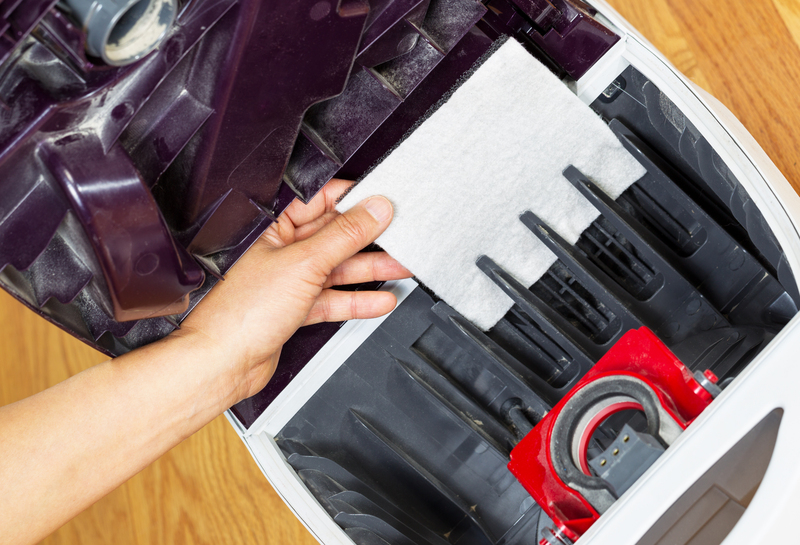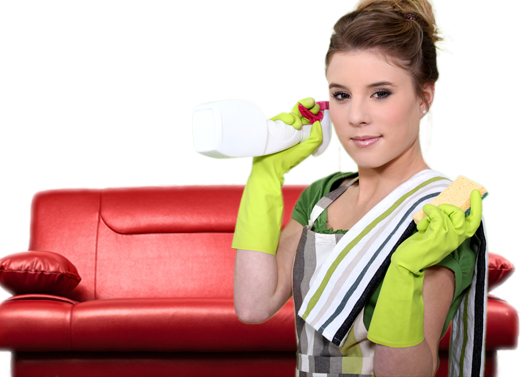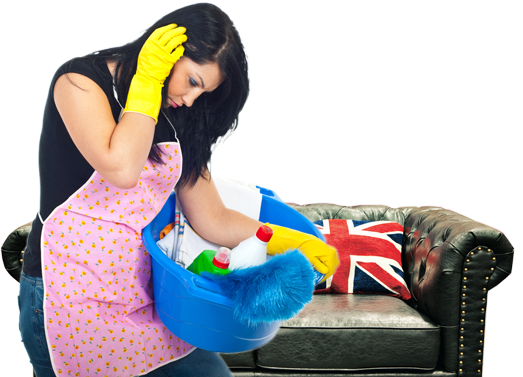Efficient curtain cleaning techniques for a refreshed home
Posted on 03/09/2025
Efficient Curtain Cleaning Techniques for a Refreshed Home
Curtains are more than just beautiful window dressings - they play a crucial role in the ambiance, cleanliness, and even the health of your living space. Over time, curtains accumulate dust, allergens, pet hair, odors, and grime that can dull their appearance and impact the overall atmosphere of your home. Efficient curtain cleaning techniques are essential for keeping your interiors looking fresh, enhancing air quality, and prolonging the lifespan of your window treatments. In this comprehensive guide, we'll explore the most effective and eco-friendly ways to clean all types of curtains, from lightweight sheers to heavy drapes, ensuring they remain vibrant and inviting.

Why Regular Curtain Cleaning is Essential
Curtains frequently get overlooked during regular cleaning routines, yet they trap significant amounts of dust, smoke, cooking residues, and particles brought in from the outdoors. Without proper curtain maintenance, these contaminants can contribute to musty odors, worsen allergies, and make your home appear dated and unkempt. Regular cleaning offers several benefits:
- Improved indoor air quality: Eliminates dust mites, pollen, and airborne bacteria.
- Enhanced room aesthetics: Clean curtains brighten and beautify your home instantly.
- Fresher environment: Removes lingering odors and makes your home feel renewed.
- Prolonged curtain lifespan: Proper care prevents fabric degradation and fading.
Let's uncover the best curtain cleaning methods to achieve a revitalized and healthier home.
Understanding Your Curtain Fabric
The first step towards effective curtain cleaning is recognizing your curtain's fabric. Cleaning techniques vary for each material, and using the wrong method can result in shrinkage, discoloration, or fabric damage. Common curtain fabrics include:
- Cotton and linen: Durable, easy to clean in most cases.
- Polyester and synthetics: Often machine-washable and quick-drying.
- Velvet: Requires gentle care, often dry cleaning.
- Sheer and lace: Delicate, prone to snagging and stretching.
- Silk: Luxurious but sensitive, best handled by professionals.
Always check the manufacturer's label for cleaning instructions before proceeding. When in doubt, test a hidden area of the fabric first.
Top Efficient Curtain Cleaning Techniques
1. Regular Dusting and Vacuuming
The simplest and most efficient curtain cleaning technique is regular dust removal. Weekly dusting keeps your curtains fresh and minimizes deep cleaning frequency.
- Vacuum: Use a vacuum cleaner with a brush or upholstery attachment. Begin from the top, moving down in gentle, vertical strokes. Focus on pleats, folds, and edges where dust accumulates.
- Lint roller or microfiber cloth: For minor dust or hair, run a lint roller or damp microfiber cloth along the fabric.
2. Spot Cleaning Stains
For marks, spills, or stubborn spots, prompt action is vital. Here's how to tackle spot cleaning:
- Blot, don't rub: Gently blot spills with a clean, dry cloth to prevent spreading.
- Mild detergent solution: Mix a few drops of dish soap in warm water. Dip a soft cloth in the solution, wring it out, and dab the stain gently.
- Rinse: Wipe the spot with a separate damp cloth to remove soap residue.
- Test first: Try any cleaning solution on a hidden area to check for discoloration.
3. Machine Washing Curtains
Machine washing is one of the most convenient curtain cleaning methods for cotton, linen, and some synthetics. Follow these steps:
- Read care labels: Ensure your curtains are machine washable.
- Remove hooks and hardware: Take off all detachable accessories to protect your appliance and curtains.
- Shake outdoors: Give curtains a shake outside to remove loose dust before loading.
- Gentle cycle: Wash with cold or lukewarm water in a gentle cycle using mild detergent.
- Drying: Air-dry by hanging or drape flat on a clean surface. Avoid direct sunlight to prevent fading.
- Iron if needed: To remove wrinkles, quickly iron while slightly damp.
4. Hand Washing Delicate Curtains
Certain fabrics like sheer, lace, or silk demand delicate handling. Here's how to hand wash effectively:
- Fill a basin: Use cool or lukewarm water with a small amount of gentle, non-bleaching detergent.
- Soak gently: Place the curtains in the water, let them soak for 10-15 minutes.
- Agitate lightly: Swish fabric gently, avoiding harsh rubbing or twisting.
- Rinse thoroughly: Empty the soapy water, refill with clean water, and rinse until water runs clear.
- Drying: Squeeze (do not wring) and hang in a shaded area to air dry.
5. Steam Cleaning Curtains
Steam cleaning is an efficient curtain cleaning technique for heavier curtains or when you want to sanitize and refresh fabric without taking them down. Here's how:
- Choose the right steamer: Upright garment or handheld steamers both work well.
- Prep area: Place a towel below the curtains to catch any drips.
- Steam top down: Hold the steamer close to the curtains (but not touching), moving in vertical motions from the top to the bottom.
- Safety tip: Ensure proper ventilation to speed up drying and prevent mildew.
6. Dry Cleaning for Special Fabrics
For curtain materials that are prone to shrinking, color-bleeding, or fabric distortion--such as wool, silk, and velvet--professional dry cleaning is the safest option. Always opt for dry cleaning if:
- The manufacturer's label is marked 'Dry Clean Only'.
- The fabric is heavily embroidered, lined, or intricately decorated.
Contact a reputable curtain cleaning service for delicate or valuable window treatments.
Eco-Friendly Curtain Cleaning Tips
Embracing green curtain cleaning solutions ensures safety for your family, pets, and the planet. Here are sustainable options:
- Baking soda for odor removal: Sprinkle on dry curtains, wait for 15 minutes, and gently vacuum away.
- Vinegar spray: A mix of equal parts white vinegar and water in a spray bottle can freshen up odors and break down residue. Test on a small area first.
- Essential oils: Add a few drops of your favorite scented oil to the vinegar spray for a natural fragrance boost.
- Natural sunlight: Air-dry curtains outdoors on clear days to harness sunlight's antibacterial properties (avoid strong midday sun for colored curtains).
Preventative Curtain Care for Lasting Freshness
Maintaining clean curtains requires regular care and simple preventive steps:
- Keep windows closed on windy or high-pollen days.
- Use tie-backs or holdbacks so curtains don't touch floors or radiators, preventing dust buildup and fabric damage.
- Vacuum floors and window sills frequently to stop dirt from reaching the curtains.
- Air your rooms daily to disperse moisture and discourage mildew.
How Often Should You Clean Curtains?
The frequency of curtain cleaning depends on multiple factors, including local environmental pollution, presence of pets or smokers, and the room's purpose. Here are general guidelines:
- Light dusting or vacuuming: Every 1-2 weeks.
- Machine or hand washing: Every 3-6 months, or sooner if visible soiling occurs.
- Dry cleaning: Once or twice a year for special fabrics.
- Steam cleaning and odor refreshing: As needed, especially after winter or before major events.
Pay attention to signs of dirt, unpleasant odors, or increased allergy symptoms, and adjust your schedule accordingly.
Troubleshooting Common Curtain Cleaning Challenges
- Mold or mildew: Remove curtains immediately. Soak in a solution of water and non-chlorine bleach (safe for fabric), then wash as usual. Dry thoroughly in sunlight.
- Wrinkles after washing: Iron on the suitable fabric setting while still slightly damp, or let hang--the weight often pulls out minor creases.
- Pet fur: Use a lint brush or slightly damp microfiber cloth before vacuuming or washing.
- Persistent odors: Soak curtains in a solution of vinegar and water before the final rinse.
DIY Curtain Cleaning vs. Professional Services
Should you clean your own curtains or hire professionals? Here's a quick comparison:
- DIY Cleaning: Cost-effective, convenient for small or washable curtains, instant results, customizable eco-friendly methods.
- Best for: Cotton, polyester, simple sheers, lightly soiled curtains.
- Professional Curtain Cleaning Services: Deeper cleaning, suitable for heavy, intricate, lined, or expensive curtains.
- Best for: Velvet, silk, wool, blackout, lined, or oversized drapery.
*Tip: For annual deep cleans or delicate window treatments, professional services offer invaluable expertise.

Quick FAQs on Curtain Cleaning
- Can I put blackout curtains in the washing machine? Only if the care label says so. Many blackout linings need spot or dry cleaning.
- How do I refresh curtains without washing? Vacuum, steam clean, and use a fabric freshener or vinegar-water spray.
- Are curtain cleaning sprays safe? Many are, but always test on a hidden spot first, especially with delicate fabrics.
- Can direct sunlight disinfect curtains? Sunlight can help freshen and kill some microorganisms, but it may cause fading--air dry in the shade when possible.
Conclusion: Fresh Curtains, Refreshed Home
*Efficient curtain cleaning techniques* transform the look, feel, and air quality of your space. By identifying your fabric type, applying the best cleaning method, and establishing a regular maintenance routine, you can protect your investment and enjoy a healthier, more beautiful home environment. Whether you machine wash, hand wash, vacuum, or opt for eco-friendly solutions, keeping your curtains clean is a key component of every refreshed home. Start today and experience the instant difference that clean, vibrant window treatments bring!





